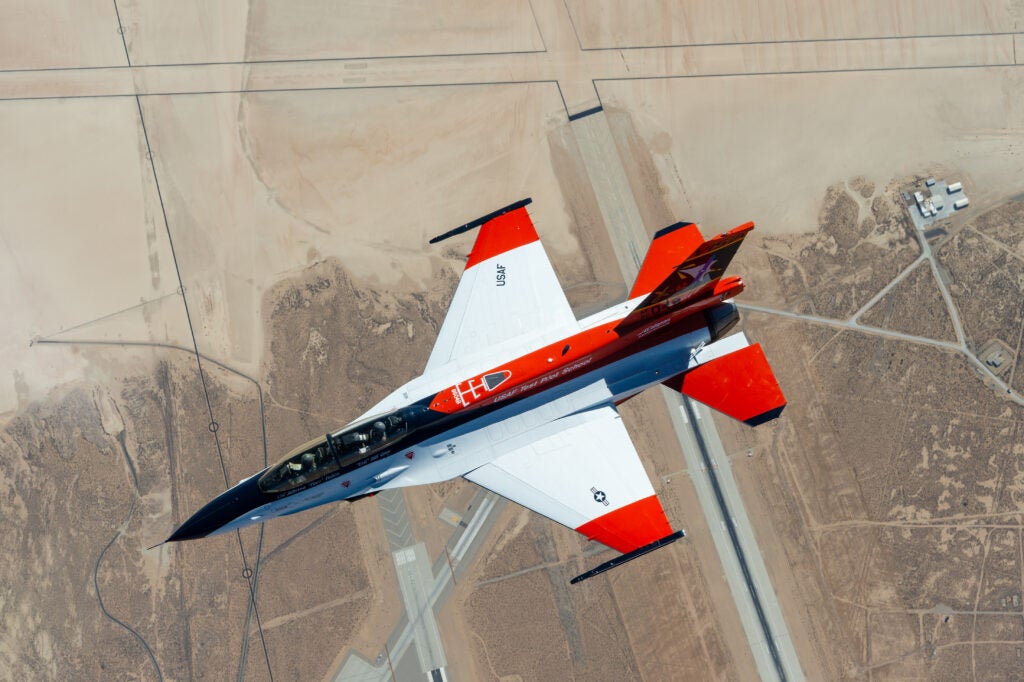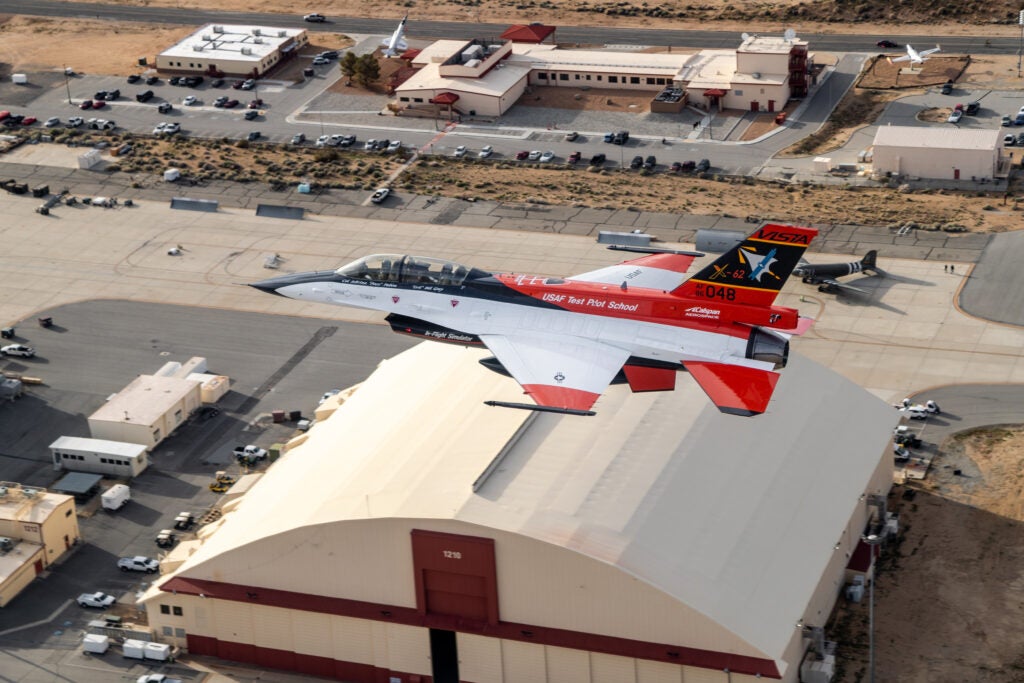First US Air Force AI Dogfights Focused On Safety, Confidence Building
The head of the United States’ experimental efforts to develop an artificial intelligence capable of flying fighter aircraft in a dogfight has said that the focus of the initial “live-fly” dogfight demonstrations last fall was the AI’s ability to safely fly the test aircraft used in a dogfight against other fighters flown by human pilots.
Lt. Col. Ryan Hefron, head of the Defense Advanced Research Projects Agency’s Air Combat Evolution project, told reporters on a conference call that the AI had been loaded on the Air Force’s X-62 VISTA (Variable Stability In-flight Simulator Test Aircraft), with the extensively modified F-16 flown against regular F-16s flown by human pilots.
Hefron said the AI performed well, but said security classification meant he could not discuss the outcome of the dogfights. He added that the focus of the tests so far had been demonstrating that the AI could safely fly the aircraft in order to build pilot confidence in the AI.

According to Hefron, the AI taught itself how to dogfight, running “billions” of virtual simulations on how to fly the aircraft across scenarios with differing demands, conditions and rules of engagement.
While the AIs had previously bested human pilots in computer simulations, Hefron said those simulations did not have rules stopping the AIs from exceeding the F-16’s structural limits, with those rules added shortly before “live-fly” tests started. According to Air Force Test Pilot School commandant Col. James Valpiani, the AI was only permitted to fly the X-62 once it demonstrated that it could routinely fly the aircraft safely.
Hefron said that non-dogfight flight tests of AI “agents” started in late 2022, with 21 tests conducted before the start of dogfights. The two pilots aboard the X-62 switched between AIs to compare their performance, with Hefron adding that they never had to take back aircraft control from the AIs.
While Air Force Secretary Frank Kendall has said that he intends to fly as a passenger in the X-62 for an AI-flown flight, neither the Air Force or DARPA would comment on when the flight is expected to take place.

